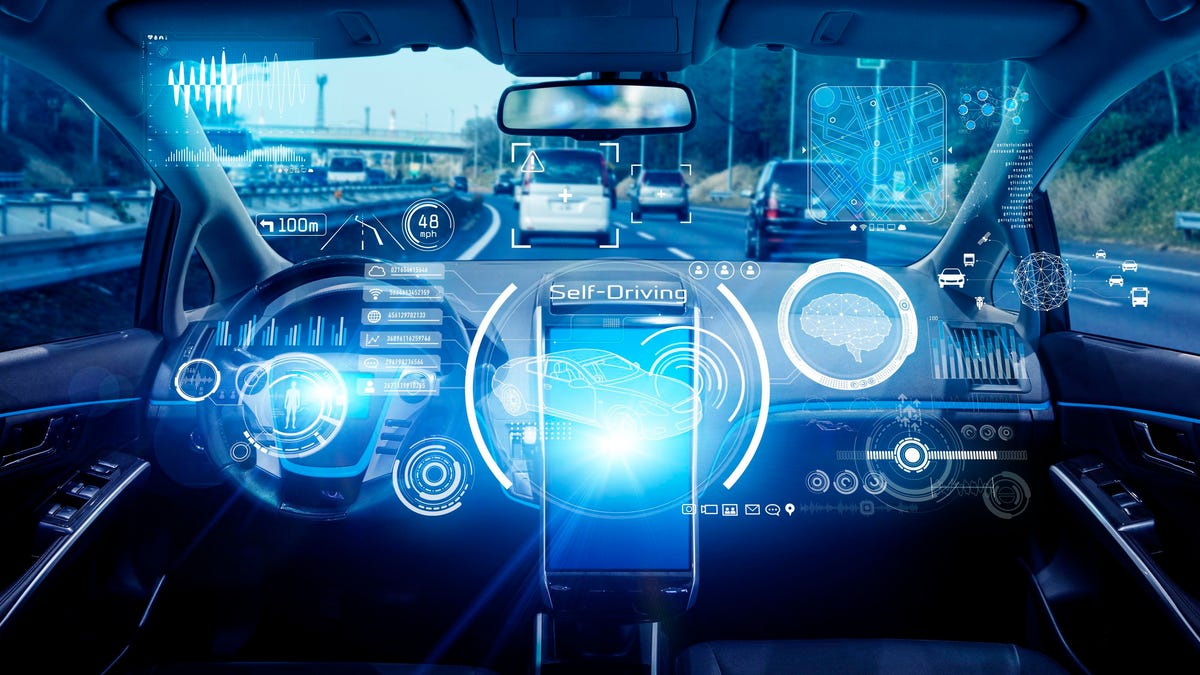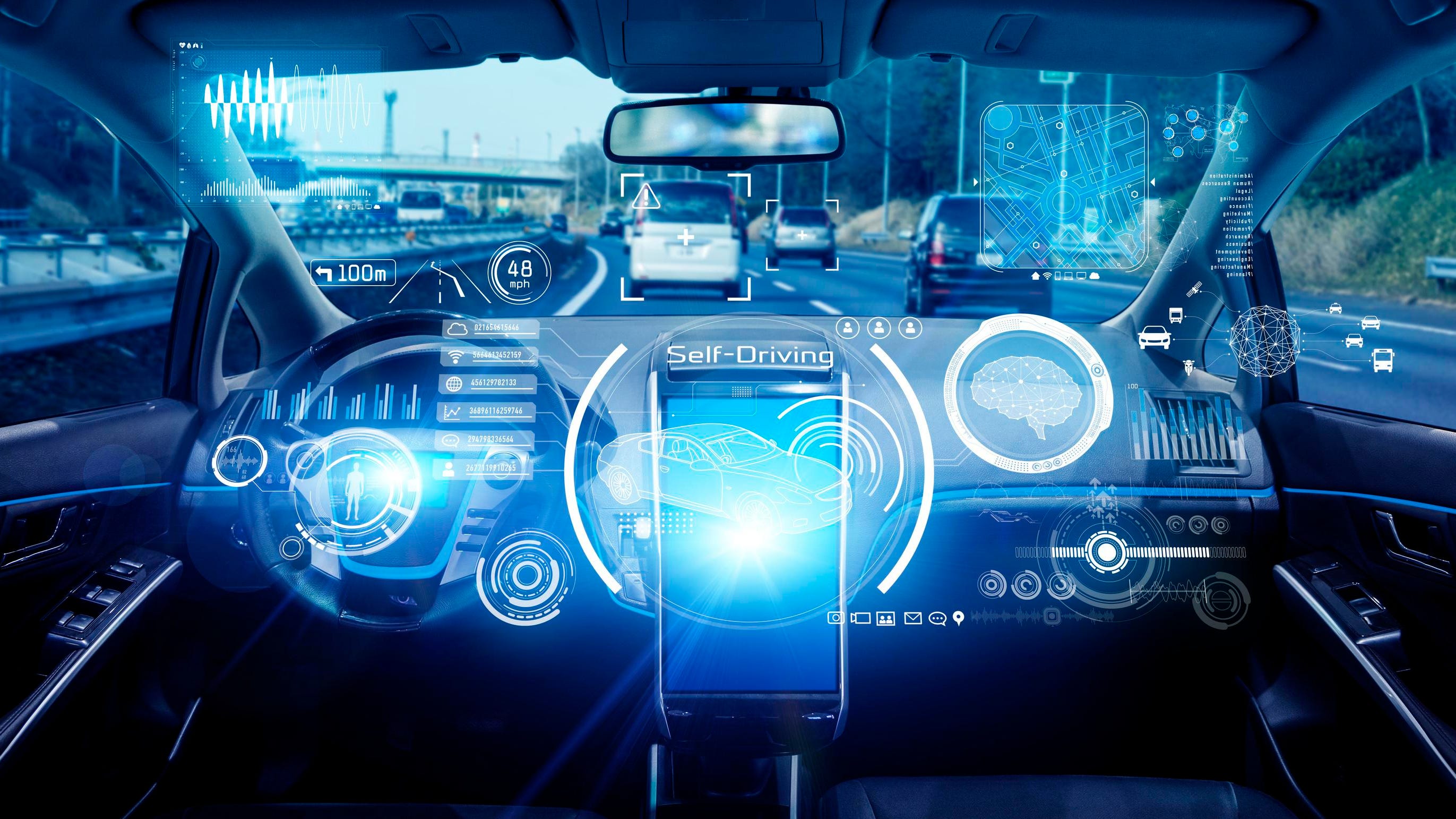
The “Vehicle to Everything” trend is transforming the experience of owning or using a car as we know it. Here’s a look at what’s coming down the turnpike, and how an increasing focus on customer experience is pushing automotive manufacturers to innovate.
Fully autonomous vehicles and services provide a glimpse into a future where connectivity to the vehicle—and communication with other vehicles—is paramount. The rise of 5G networks will only serve to accelerate these trends.
getty
Today’s cars are decidedly not your father’s automobile. Less K-car, more K.I.T.T. But if the pace of technological change is any indication, tomorrow’s cars won’t be anything like today’s cars, either.
If you’ve gone car shopping recently, you know how deeply digital cars have become. Think infotainment services including streaming audio and voice assistants, connectivity services for passengers (i.e., wireless hotspots), or advanced navigation with real-time traffic and route optimization using Google Maps to conserve electric vehicle (EV) batteries or to reduce your carbon footprint. Even car keys have gone digital!
Behind the scenes, a combination of cellular network data services and advanced in-vehicle capabilities make it all possible. On the connectivity side, we’ve watched cellular networks go from 2G to 3G, 4G, and now, increasingly 5G, giving data services more bandwidth, lower latency and higher resiliency. In-vehicle capabilities, meanwhile, are provided by on-board operating systems such as Android Automotive OS with Google built-in, or by projecting your Android smartphone to a screen with Android Auto.
But today’s in-vehicle services are just the beginning: autonomous vehicles, electrification, and an increasing focus on customer experience are pushing automotive manufacturers to develop a raft of new capabilities for upcoming models that will fundamentally change what you can do using your car.
This trend is known as Vehicle to Everything, or V2X, and hinges on a variety of technologies: on-board “edge” compute to run apps and process data locally; and wireless connectivity like WiFi and Bluetooth, which enable network connectivity between riders, the car and any on-board devices. And to communicate further afield, highly reliably, low-latency cellular 5G connectivity connects the edge (the car, or devices in the car) to core data centers and the cloud. Connectivity back to the cloud is particularly important, because that’s where most modern content and entertainment services live, as well as management and enablement services.
Related: Learn how Google Cloud is partnering with telecommunications companies around the world to accelerate 5G adoption and monetization.
You can distill V2X into a few distinct patterns:
- Vehicle to Vehicle (V2V) – Here, vehicles are equipped with a wide array of sensors and communicate with one another to share information about themselves and what they observe around them, with the goal of improving safety, avoiding accidents, and enhancing the customer experience. Vehicles in close proximity to one another can use short-range dedicated wireless technologies to communicate; for vehicles at greater distances, cellular connectivity and edge computing play an important role.
- With Vehicle to Infrastructure (V2I), Vehicle to Cloud (V2C), Vehicle to Pedestrian (V2P), vehicles can send information to, and receive information from, road infrastructure, cloud services, and nearby pedestrians, respectively. Such communication clearly requires cellular connectivity, and depending on the sensitivity of the use-case, may also require localized edge computing.
- Vehicle to device (V2D) provides a personal network that allows the vehicle and its passengers to interact. Soon, assistants (like Google Assistant) will work with your car, providing a seamless experience as you move from home to your vehicle and beyond. V2D is delivered by technologies such as Bluetooth and WiFi.
Here are a few examples of how these technologies will transform the experience of owning or using a car in the not-too-distant future:
- Re-imagining vehicle maintenance – Whether you’re an individual consumer or an enterprise operating a fleet of vehicles, maintenance and repair are a major expense and disruption to life or business operations. As vehicles become more intelligent and connected, evaluating performance, identifying problems, and initiating repair in real-time becomes necessary. A combination of cellular connectivity and edge computing can make it easier for a technician to repair the vehicle, or to predict and proactively fix an issue. For example, if a tire is low, the vehicle may automatically adjust your driving settings to run in a lower gear until the tire is fixed.
- Collaborative and integrated cities – As vehicles become more intelligent and connected, they will increasingly become active participants in the intelligent ecosystem around them. As an example, there’s been a surge in adoption of digital payments technologies like Google Pay; tomorrow’s vehicles will also be part of this ecosystem. Pervasive, reliable connectivity allows vehicles, infrastructure, and payments systems to be integrated together. Imagine never having to worry about whether or not you have the right parking app on your phone. Instead, you could just ask Google Assistant to reserve an open spot for you, navigate you to it, and pay on your behalf.
- Enhanced in-vehicle experiences – As the world shifts to electric vehicles and eventually autonomous driving, you’re going to have a lot more time to spend in your vehicle. Whether your car is driving itself or you’re waiting for it to charge, you’ll want to use that time effectively. In coming years, support for streaming video and gaming will be key differentiators for vehicles, and will be made possible by 5G networks and the more advanced vehicle infotainment systems planned for newer models. Also, as workers start coming back into the office, their commute times may increase. This, coupled with the new “work anywhere” mentality, will drive automakers to optimize their vehicles for productivity. For example, you might want to be able to participate in a video chat (like Google Meet) over a 5G network, effectively using your car as a mobile office.
Related video: What’s new with Android for Cars
All this is coming to a car near you, very soon. According to IDC, more than 50% of vehicles produced by 2024 will have some level of autonomous features, and vehicle manufacturers are ramping production in electric vehicles with extensive V2X capabilities. As we look further out, fully autonomous vehicles and services such as Waymo’s self-driving taxi service provide a glimpse into a future where connectivity to the vehicle—and communication with other vehicles—is paramount.
The rise of 5G networks will only serve to accelerate these trends. According to Gartner, by the end of 2024, 5G networks will be deployed in 60% of Tier 1 cities, up from just 10% of cities at the end of 2020. Telecommunications providers are positively racing to deliver higher-performance and lower-latency networks to meet consumers’ appetite for content, and are enabling their networks with advanced capabilities tied to service experience. The 5G revolution is upon us.
By the end of 2024, 5G networks will be deployed in 60% of Tier 1 cities, up from just 10% of cities at the end of 2020, according to
Gartner.
At the same time, these same telcos are looking for ways to monetize 5G networks, and the automotive industry looks like an especially promising candidate. In the automotive industry, products (vehicles) move frequently and at high speeds, while operators (drivers) and consumers (passengers) increasingly expect their time in-vehicle to be an experience. This becomes even more true when you consider a driverless future, with even greater dependence on the network to connect vehicles to the cloud, to infrastructure, and to other vehicles.
There will be speed bumps along the way. On the telco side, it remains to be seen whether 5G will be “persistent” and fast enough to support the needs of use cases like autonomous driving and Advanced Driver Assistance Systems (ADAS). On the automotive side, manufacturers will need a lot of semiconductors, of which there is currently a major shortage; automakers will need to shore up their supply chain before they can see the benefits of 5G. Also, discussions are underway to standardize V2X connectivity, which will be critical in assuring that the players in this highly diverse space play nicely with each other.
But we know where this road is headed. Together, 5G, edge computing and cloud are changing cars, the driving experience, and indeed, the way drivers interact with the world around them. Happy trails!
Put the pedal to the metal: Register for our webinar to learn how CSPs can innovate at the edge; visit our telecommunications blog for the latest news and updates; or learn more about Google Cloud for automotive.







